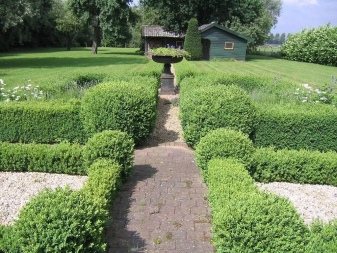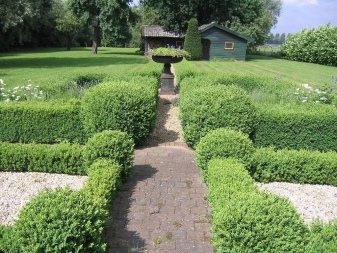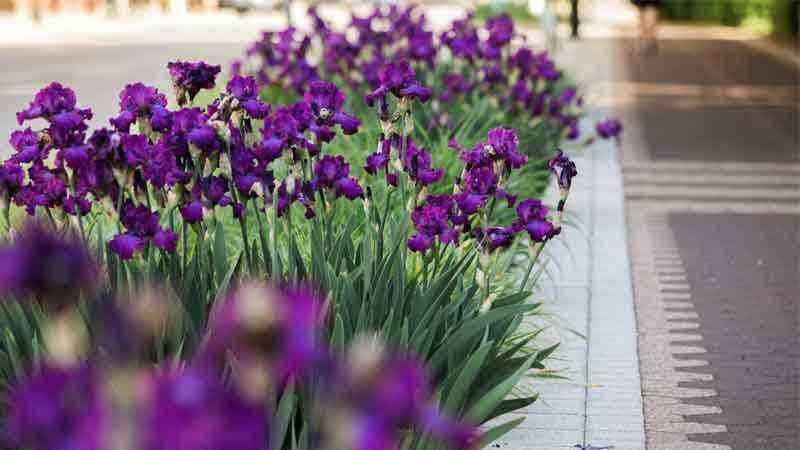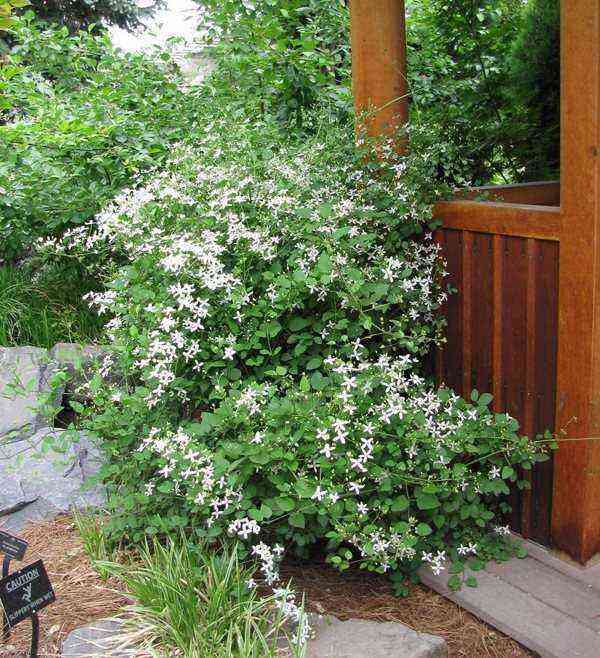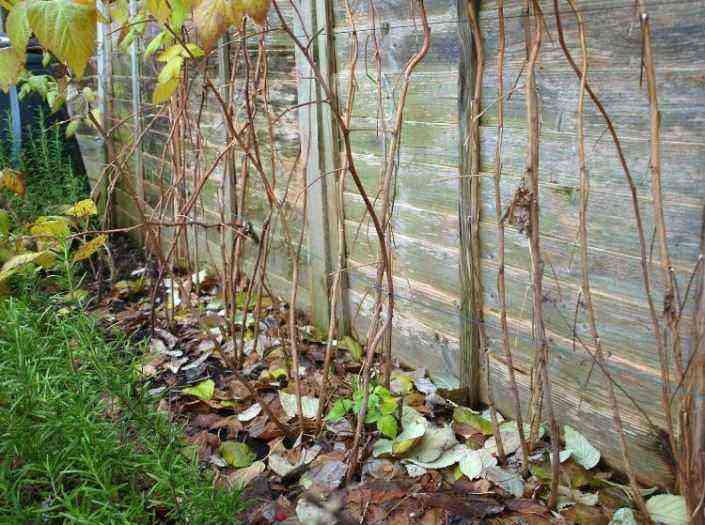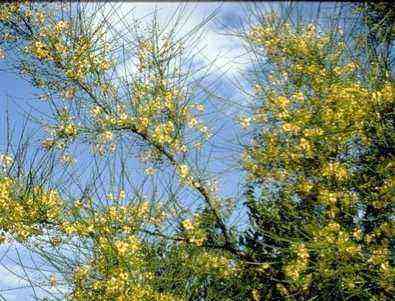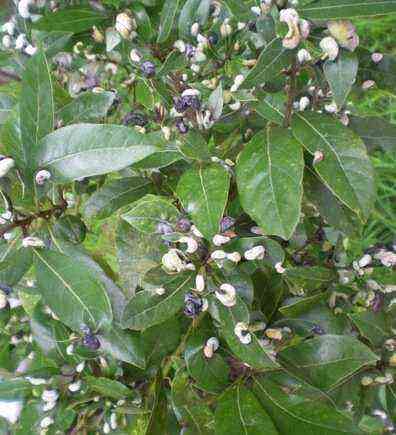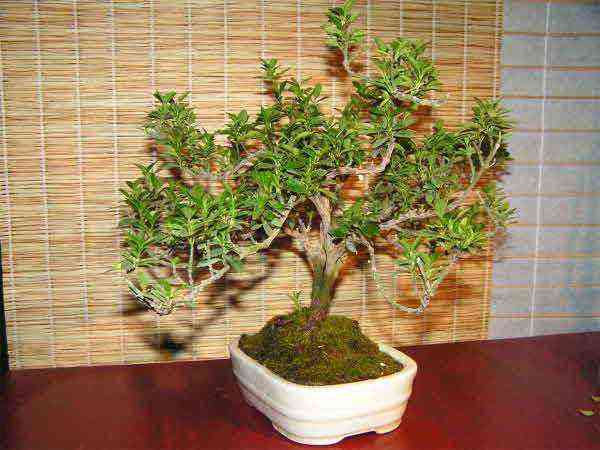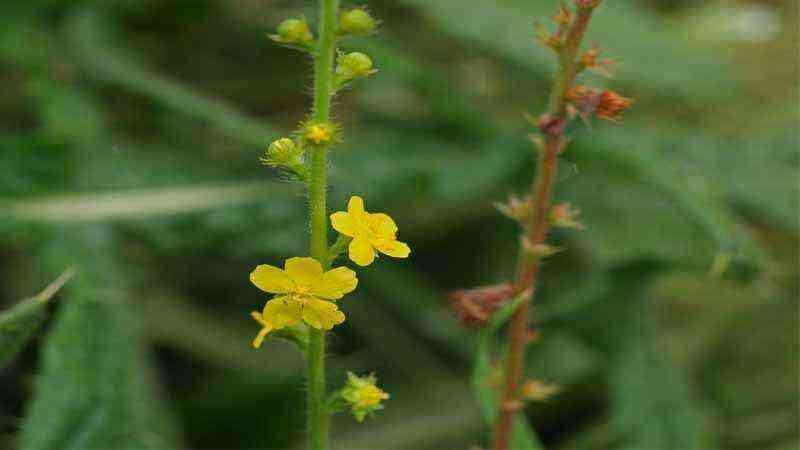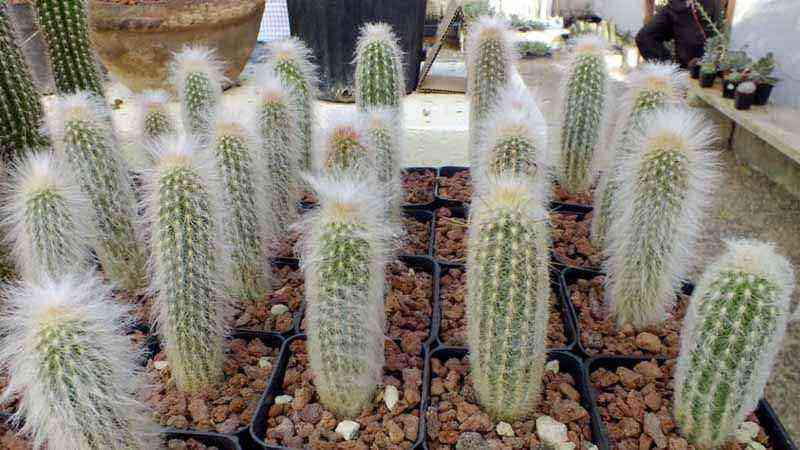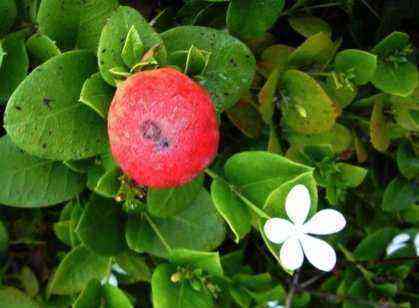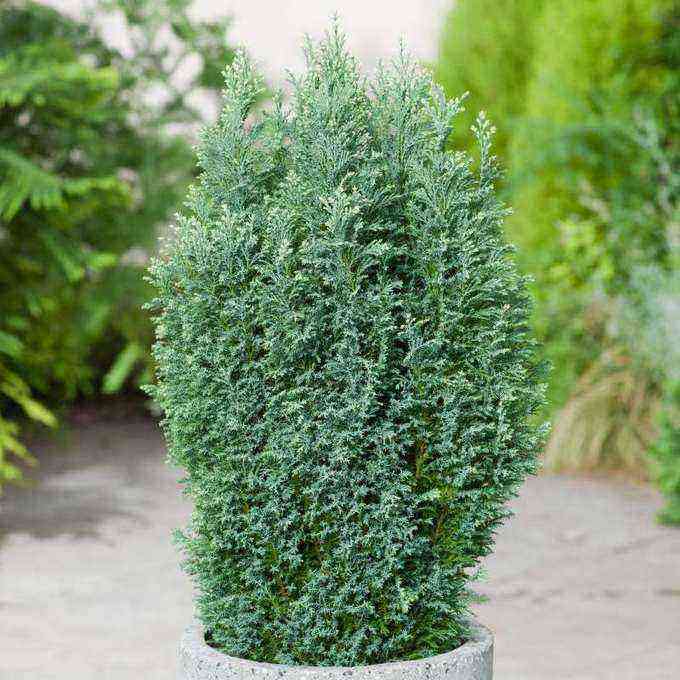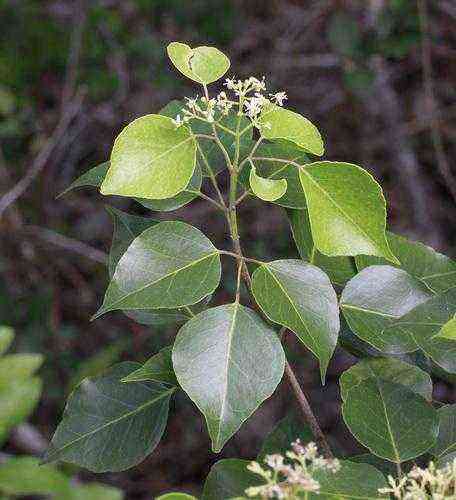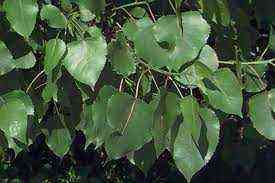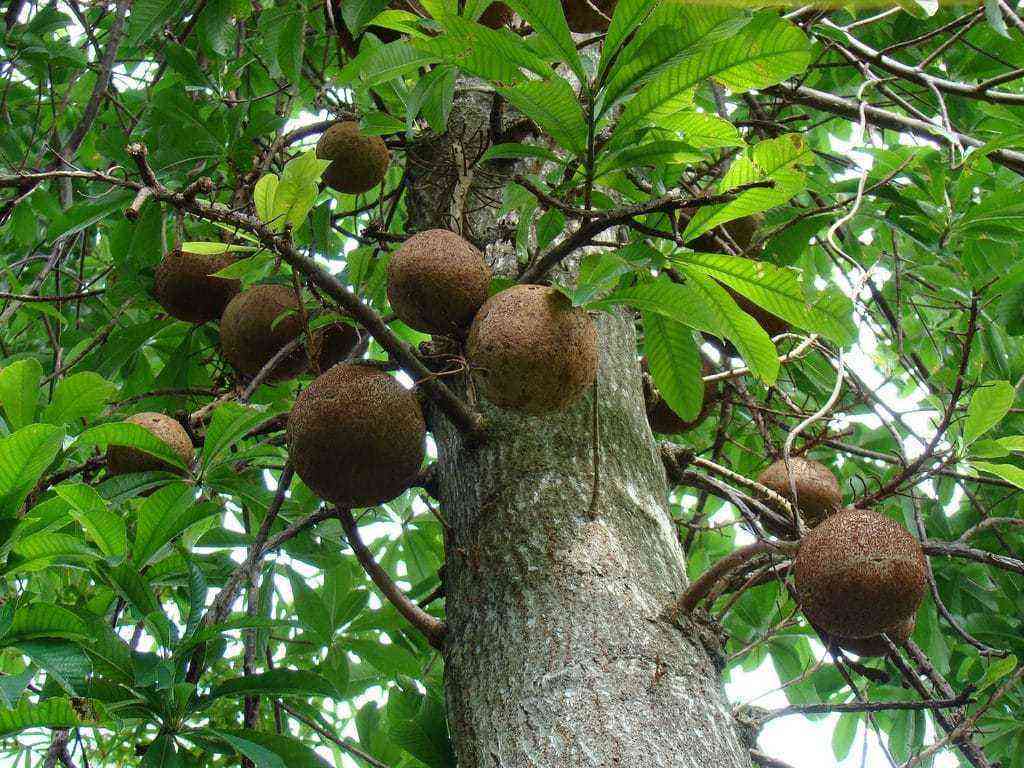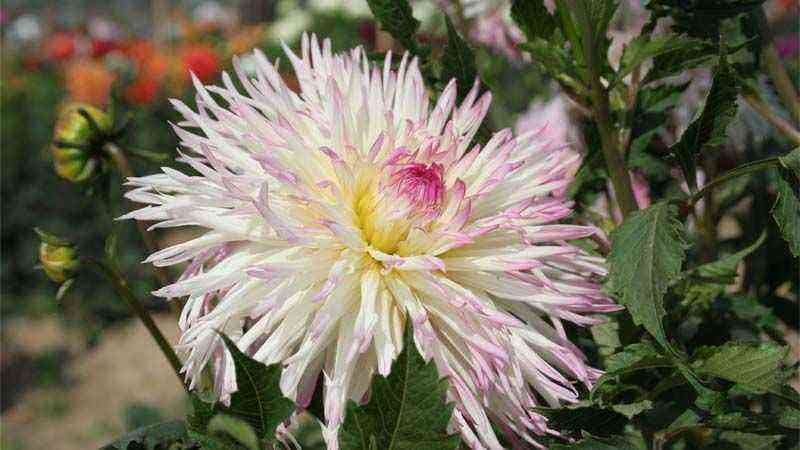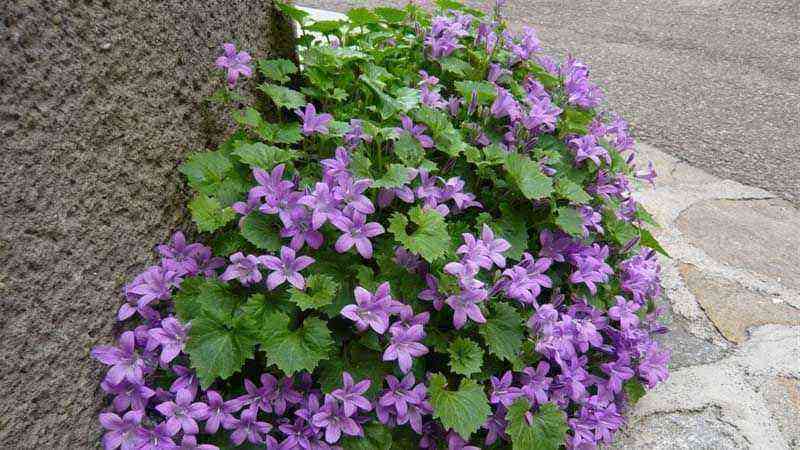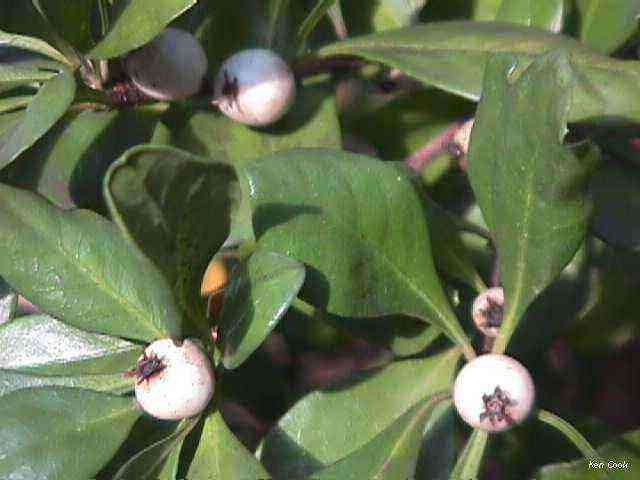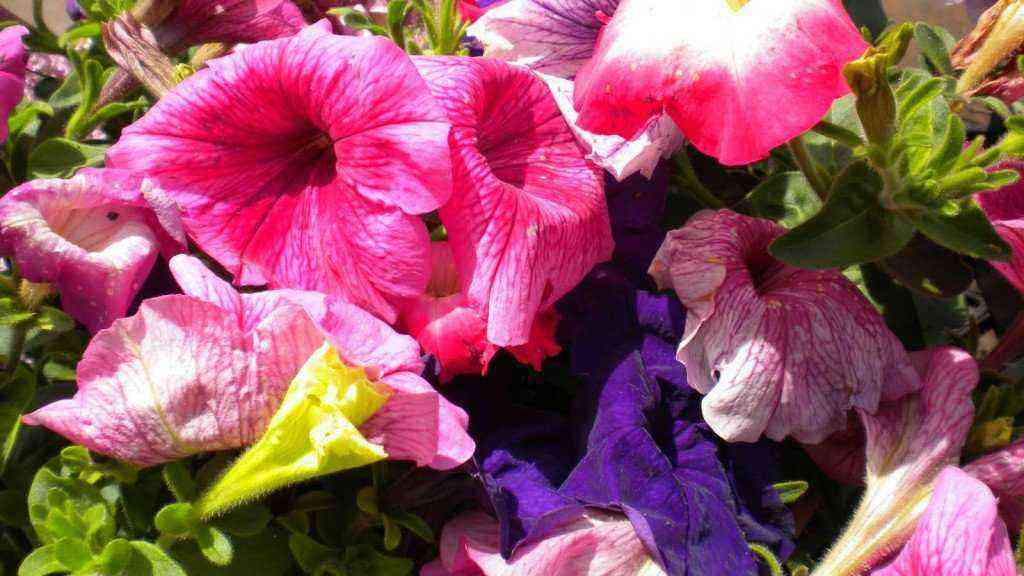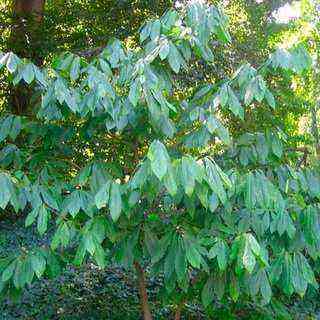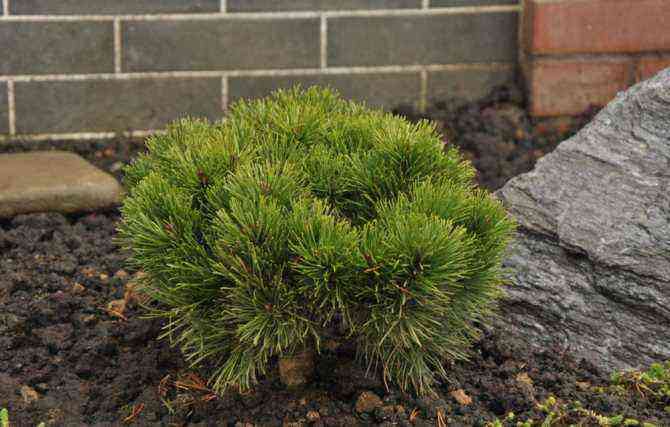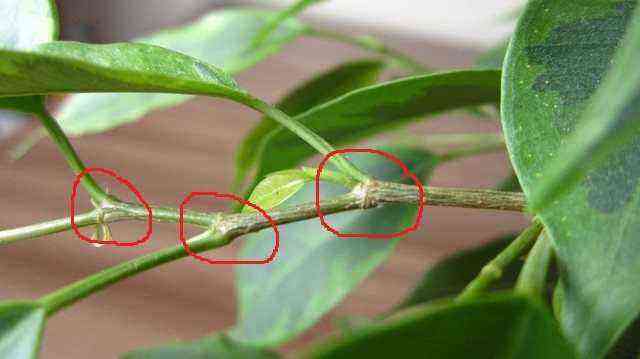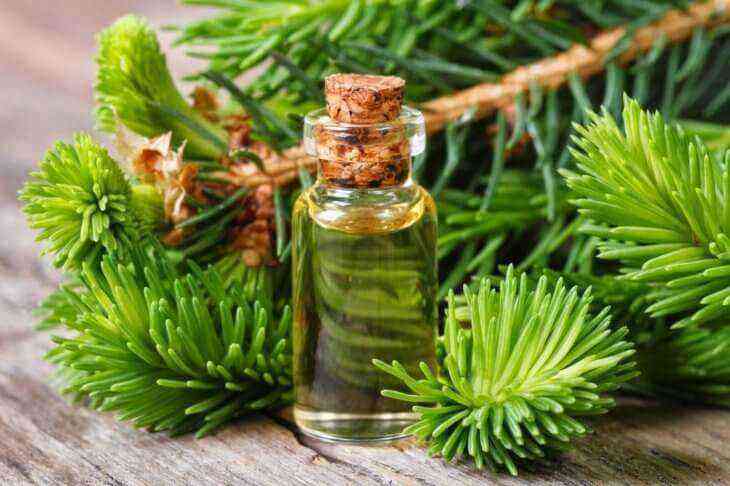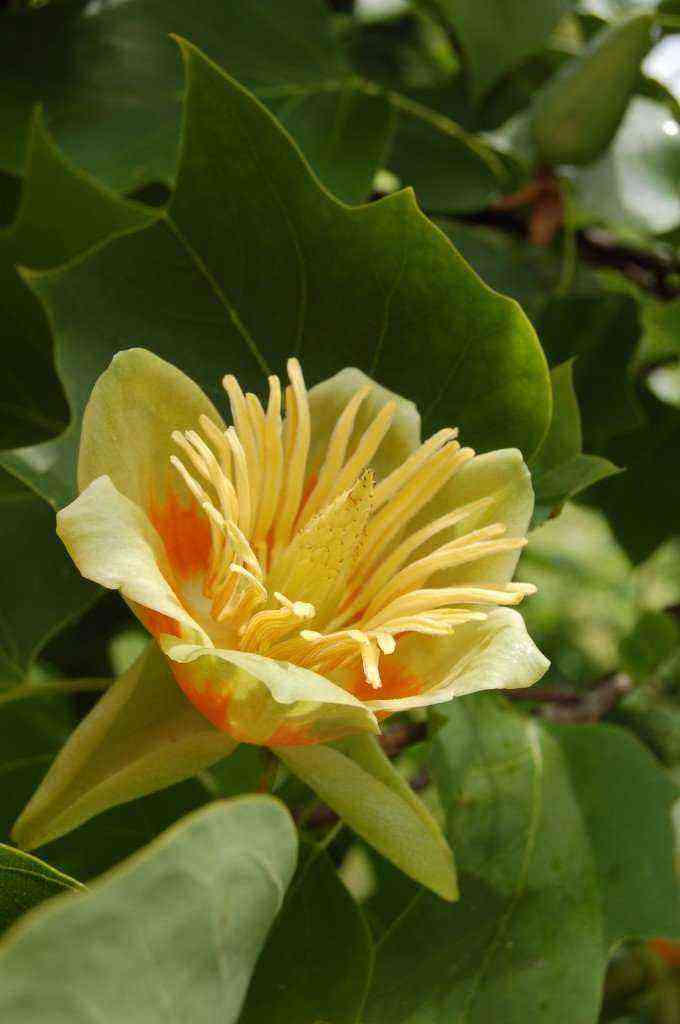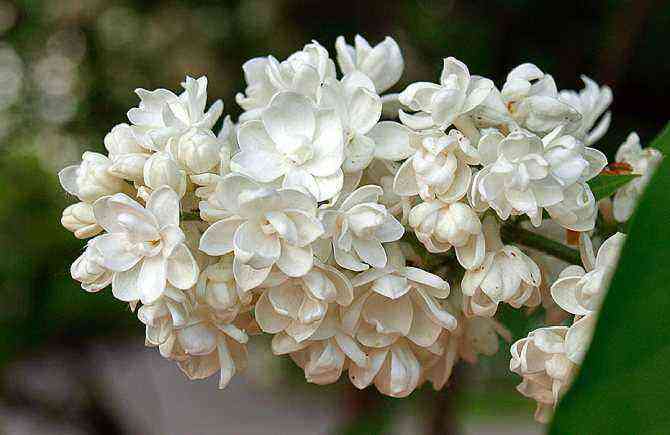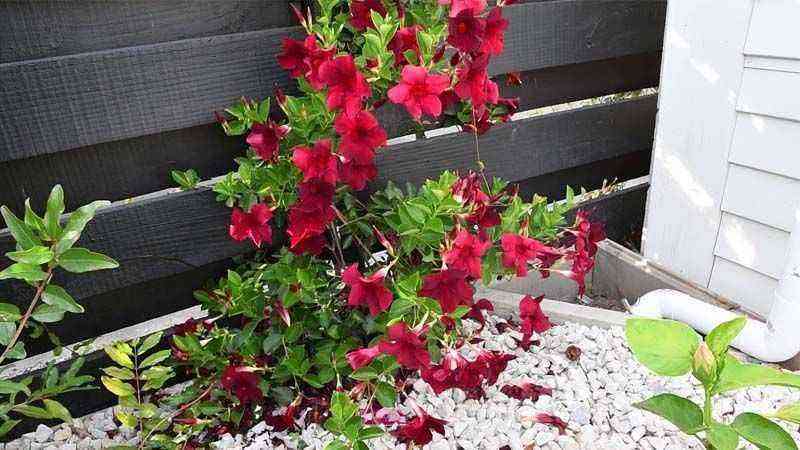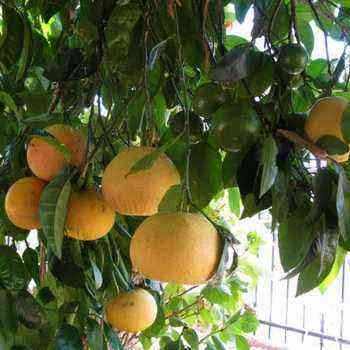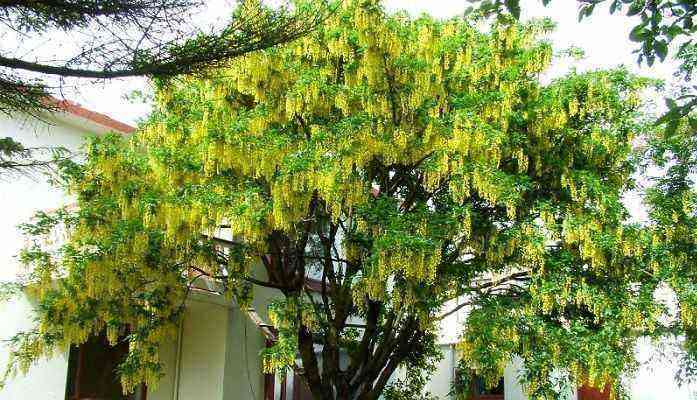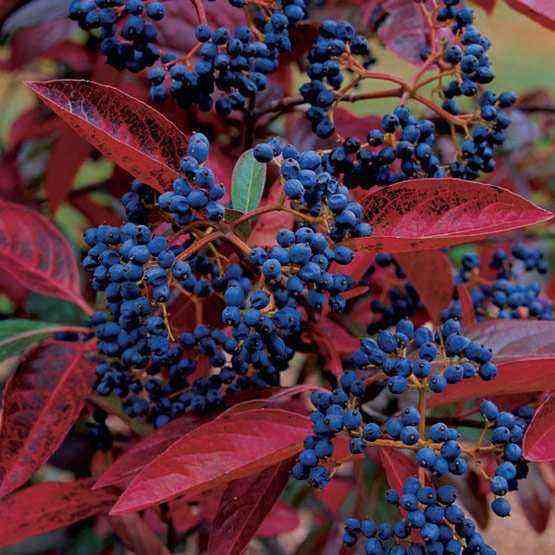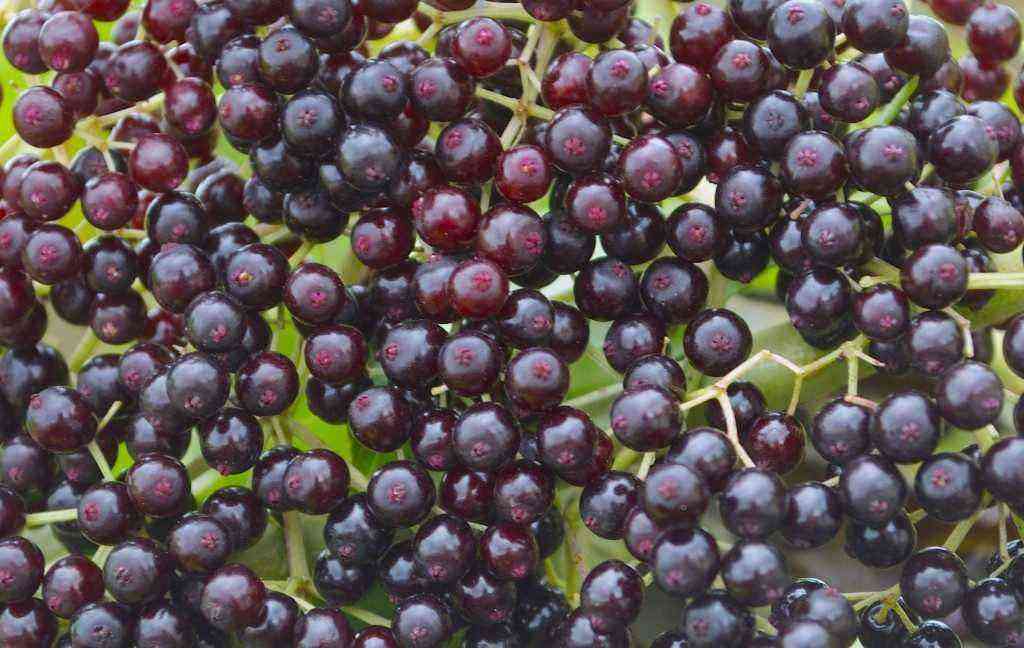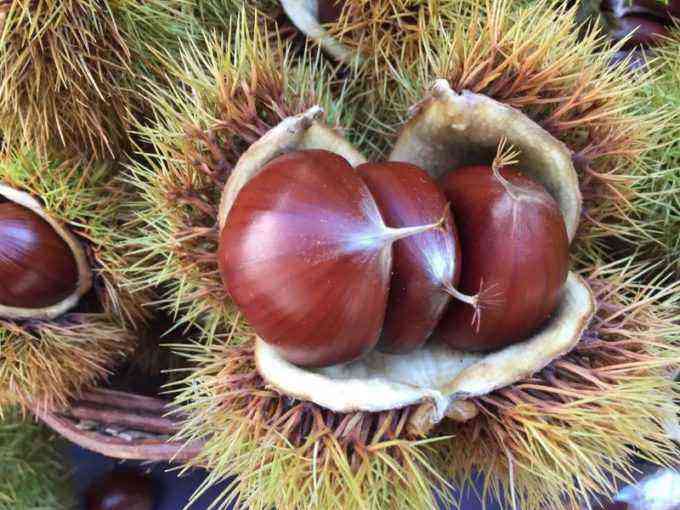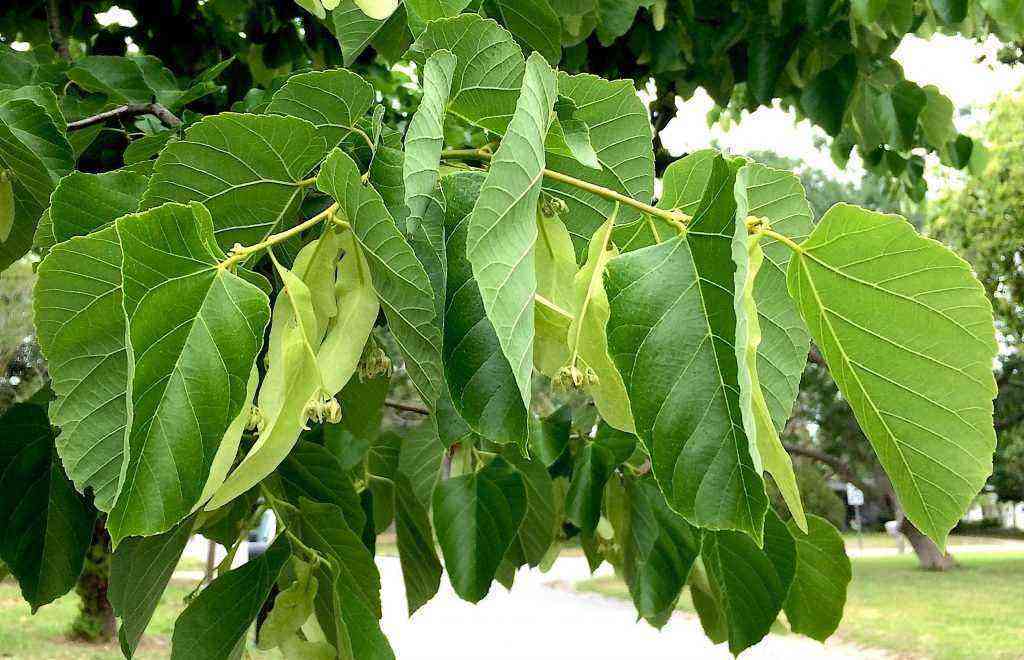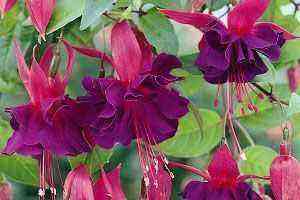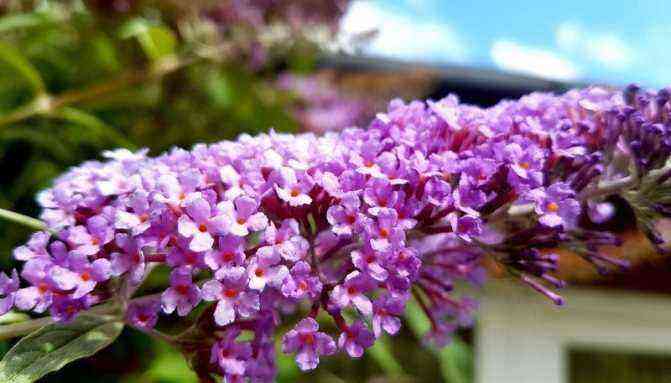8237
A winning option for landscaping a backyard is the cultivation of boxwood, even a novice summer resident can handle planting and caring for this plant in the Moscow region. This is one of the most ancient ornamental representatives; today it is cultivated as a garden and indoor plant. A luxurious green fence, border or unusual topiary is grown on a plot of bushes.
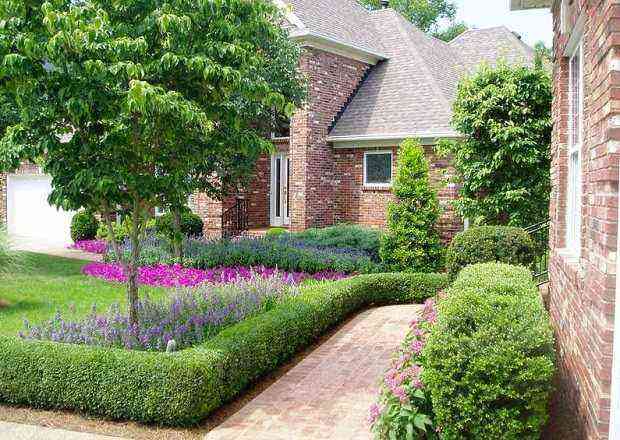
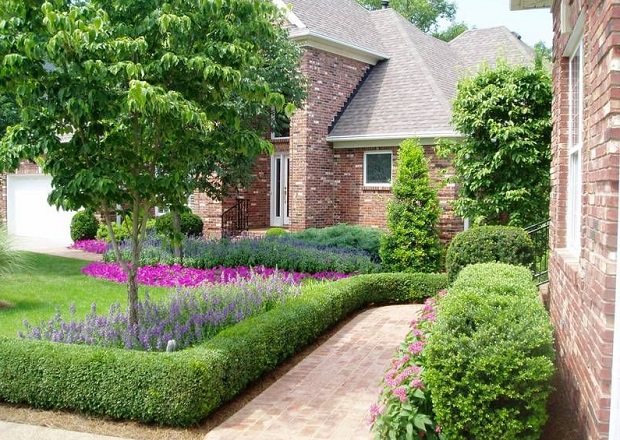
Boxwood hedges
Types of boxwood and their distinctive features
The genus Boxwood has about 30 plant species that grow in the Mediterranean and some regions of Asia. Each species has a set of unique features that distinguish it from the rest: bark color, shape and color of leaves, distribution area, growth rate. In horticulture, evergreen or ordinary boxwood (Buxus sempervirens) is used. As for the cultivation of tub plants, here the most suitable options are Chinese stunted species.
Boxwood evergreen naturally distributed in the Mediterranean countries and the Caucasus. Feels good both in partial shade and in the sun. If not pruned, it can reach up to 3 meters in height.
Boxwood Small-leaved, unlike its previous relative, is less sensitive to winter cold. He is able to withstand frost of 30 degrees without shelter. It is appreciated for its compact shape and decorative crown.
Balearic boxwood – the largest species of the family, its leaves reach up to 5 cm in length. The Balearic Islands of Spain are considered the homeland of the habitat. Distributed in the mountains in southern Spain, Portugal and the Crimean coast.
Sorts
There are many varieties of boxwood, but not all of them can withstand the climatic conditions of central Russia. In the Moscow region, it is recommended to grow the following varieties:
- Blauer Heinz – frost-resistant variety with dense bluish-green leaves;
- Elegance, a distinctive feature of this variety is the leaves with a light border, which do not lose their green color during dry periods;
- “Suffruticosis” – a low-growing variety of boxwood, the bush grows no more than 1 m in length, the crown is dense, bright green;
- “Winter Jam” can withstand severe frosts, grows quickly and lends itself well to cutting;
- Faulkner – small-leaved shrub, due to the peculiarities of the crown, most often the boxwood of this variety is given the shape of a ball.
Due to their high frost resistance, these varieties can be grown not only in the Moscow region, but also in regions with colder climates, for example, in the Urals or Siberia.
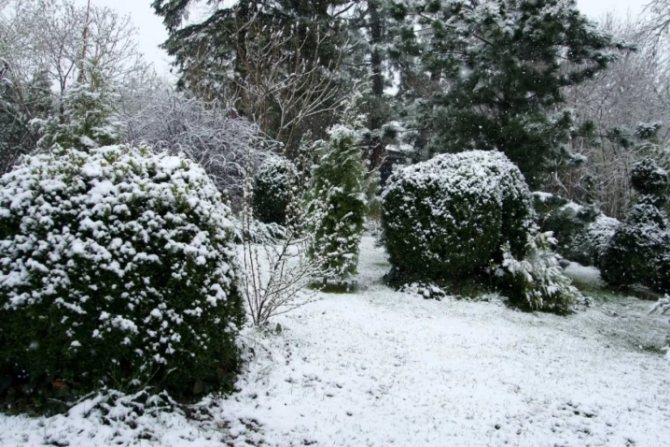
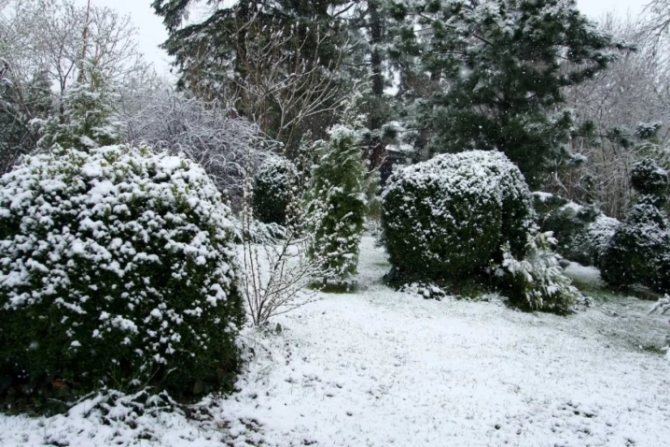
Landing
To plant boxwood, you do not need any special skills and knowledge in the field of gardening. Any time of the year is suitable for transplanting plants over the age of three, from early spring to late autumn. Younger plants are best planted in the fall season.
When choosing seedlings, try to buy only container options. Pay attention to the color of the leaves and shoots, they should be green and lush. Yellow spots on the leaves indicate that the plant will soon die.
Planting is best done on a cloudy day. Dig holes in the prepared area, slightly wider and deeper than the root ball of the seedling. You can focus on the size of the container in which the plant was located. If you plan to plant multiple bushes to form a hedge or curb, dig a wide and deep ditch.
At the bottom of the trench, it is necessary to fill a layer of compost with a height of 10-15 cm and use a fork to mix it with the ground. When preparing seedlings, make sure that the roots are spread out and do not stick out to the sides.
After the bush is covered with earth, form a depression around the trunk for the accumulation of water. The plant must be thoroughly watered immediately.
So that the roots of the plant are not dry, before planting, immerse them in water for about a day.
Care of the plant
Caring for boxwood is simple and includes:
- watering;
- loosening and weeding;
- fertilizing with mineral and organic fertilizers;
- crown formation;
- shelter for the winter;
- disease prevention.
Watering, loosening and weeding… Watering is carried out in the morning or evening hours. In hot and dry weather, watering is not increased, but it is carried out more abundantly. After each irrigation, the soil is loosened. This leads to better moisture and air exchange. Weeding – as weeds appear.
Additional fertilizing… Fertilizer is applied three times per season:
- the first one – 30 days after planting, since organic and mineral fertilizers are added to the planting pit;
- the second – with complex fertilizers during the period of active growth;
- the third – in the fall, with potassium-phosphorus fertilizers.
Important! Buxus well assimilates fertilizers in liquid form, which are applied under the root or in the form of foliar feeding.
If the plant lacks nitrogen, then the foliage acquires a reddish color with a bronze tint.
Trimming… Crown formation is best done in spring. The shape of the crown is made from any spherical to trapezoidal. Also, the plant can be grown as a standard tree or given the shape of animals or birds. Boxwood is often grown to create curbs and hedges.
When forming the crown, pruning is carried out only on young shoots, old wood is pruned only if the crown is running and has lost its proper shape.
Important! Experienced gardeners recommend forming the crown on a monthly basis, while you must not forget that the more often pruning is carried out, the more often you will have to water and feed the plant.
Disease Prevention… It consists in the removal of dead, not overwintered shoots, affected leaves, as well as in the timely provision of assistance in the event of various diseases.
Preparation for winter… Before the onset of cold weather, you need to carefully prepare the shrub. To do this, in November, the plant is abundantly shed and mulched. Dry foliage is not suitable for mulch, since in winter they can support it, which will lead to decay of the roots and the addition of diseases.
After the temperature drops to -10 degrees, the shrub must be covered. For shelter, burlap or two-three-layer non-woven material is suitable, which is fixed and sprinkled with earth.
Important! Before sheltering, the bushes must be tied up so that wet snow cannot damage the branches.
Reproduction
In horticulture, boxwood propagates exclusively by cuttings, which are planted directly in the garden. The best time to plant is spring. You can also achieve a good result in the fall, provided they are planted a month before the onset of cold weather. This is necessary in order to give the plants the opportunity to take root and prepare for winter.
Cuttings should be planted in loose, humus-rich soil. On average, about 80% of plants take root successfully, but at first it is better to cover the planted cuttings with cans or film. With regular watering, rooting occurs in 25-30 days.
To grow tall trees in a short period, choose cuttings with a length of 20 cm or more.
Temperature and humidity
Boxwood does not tolerate frost well. At a temperature of -20 degrees, the plant may die if the necessary measures are not taken to shelter the trees. To do this, at the end of autumn, before the first snow appears, wrap the bushes with burlap or other material that can protect the bushes from the wind and direct sunlight in frosty weather. To protect plants from unfavorable weather conditions, it is better to plant them in a semi-shaded place and choose frost-resistant varieties.
In no case should you cover the box with cellophane. This creates an excess of moisture, as a result of which the plant dies.
Watering
Unlike tub plants, which need to be watered daily, the trees on the plot need watering only in summer. During the rest of the year, the need for moisture is replenished by precipitation. In prolonged dry weather, boxwood is watered abundantly every 4 weeks.
From time to time, it is necessary to arrange a short shower for the plant, which will wash off the settled dust from the leaves and will have a beneficial effect on the rooting of seedlings. Do not forget to loosen the soil around the planted bushes as often as possible.
Trimming
Like top dressing, boxwood shearing is done in the second year after planting, when the tree has finally taken root. This should be done once a month, during the period of the most active growth of the bush – from May to August.
With garden scissors and other special tools, you can give the plants the desired shape. After a month, the shape needs to be corrected by removing the protruding branches.
The more often boxwood trees are trimmed, the better they need to be watered and fertilized. This will help replenish the loss of nutrients and prevent the plant from losing leaves.
Landscaping
Boxwood provides endless possibilities for landscape design lovers. Bushes love to be cut, they can be shaped into various shapes: balls, pyramids, cubes, as well as shaped in the form of animals, birds or people. Tall varieties are used to create hedges – a dense green wall that protects the site from prying eyes. Low-growing varieties of boxwood are suitable for creating borders and flower beds.

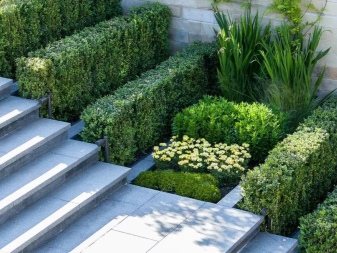
Neatly trimmed buxus bushes will emphasize the beauty of garden flowers: roses, irises, gerberas and hyacinths look even brighter against the background of lush green boxwood. Interesting compositions are obtained by combining buxus with various herbs and shrubs – nearby you can plant red heuchera, burgundy barberry, yellow euonymus.
Boxwood is shade-tolerant, therefore, a neighborhood with taller shrubs and trees is permissible – the buxus will emphasize the elegance of cypresses and thujas.
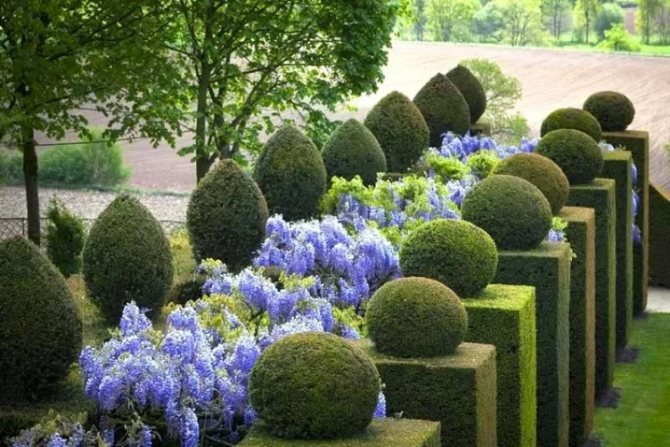
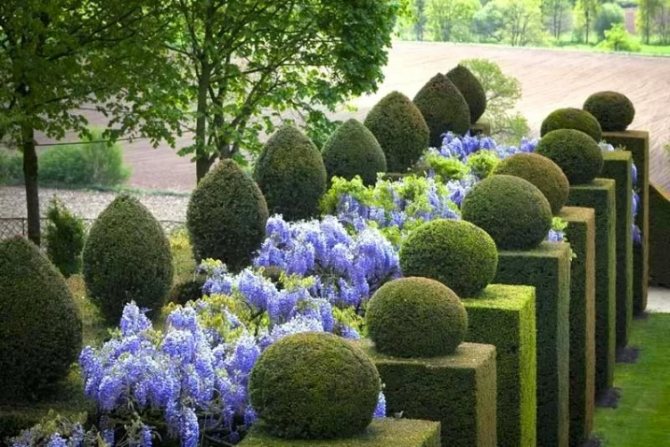
Diseases and their treatment
Despite the fact that the leaves of boxwood contain components that are poisonous and hazardous to human health, this does not protect it from damage by all kinds of pests.
Most often, the shrub suffers from boxwood gall midge and spider mites. These pests lay their eggs on the shoots of the plant. After a certain time, larvae appear from them, which penetrate the leaf tissue and damage them. You can counteract these pests by harvesting fallen leaves and regular pruning. Chemical treatments can be carried out from mid-May to mid-June.
Another well-known pest is the Volutella buxi fungus. It damages the plant and causes the shoots to die off. In the fight against it, fungicide treatment and pruning of diseased shoots are effective.
Irregular watering and poor-quality feeding contribute to the development of boxwood diseases, as well as yellowing of the edges of the leaves. To avoid this, it is necessary to create favorable conditions for growth and development for the shrub.
Boxwood moth: how to deal with an annoying guest?
This pest literally “mows down” boxwood plantings, turning them into bare shrubs. Measures must be taken right there, otherwise you will have to say goodbye to landscape plantings. To know for sure that the moth, or Cydalima perspectalis, has started, you will have to inspect the plant.
The boxwood moth is a butterfly with brown wings covered with a white border. She lays eggs on the inner surface of the leaves. Caterpillars quickly eat greens, turning the plant into a bare bush.
Signs of pest damage:
- shoots are covered with cobwebs;
- inside the bush there are many yellowish-green caterpillars with black heads;
- the near-trunk circle is dotted with the remains of foliage, insect feces;
- boxwood dries up, loses part of its foliage.
Bi-58, Fufanon and the long-established Actellik or Operkot are considered effective for pest control. All preparations are toxic, therefore, the treatment must be carried out in a protective suit, without neglecting personal safety measures. The protective effect of the solutions lasts for 3-14 days. Experienced gardeners recommend combining contact agents with systemic drugs. These include Aktara.
3-4 sprays are carried out, alternating Aktar with any contact preparation.
When planning treatment, you will have to take into account the ambient temperature in order to avoid high toxicity. If the reading on the thermometer is higher than +26 ° C, then it is better to postpone spraying.

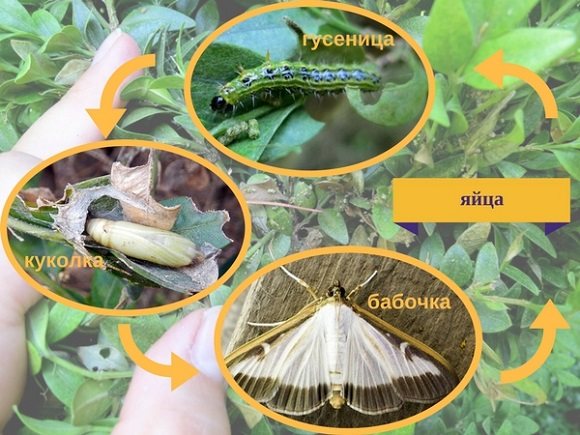
Among biological agents, the following are effective:
- Aktofit – requires 8-10 ml per 1 liter of water;
- Guapsin to combat emerging caterpillars.
For the period of struggle, it is required to change the feeding regime. For a while, the introduction of nitrogen fertilizers is excluded. They are replaced with potassium sulfate (20 g per bucket of water). A single addition of calcium chelate will not hurt.
Plants native to the subtropics and tropics can be successfully grown in cold regions. The secret is in the right variety and proper care for it. Boxwood requires only fertile soil, timely fertilization and shelter for the winter from the cold and sunlight.
Boxwood (buxus) is a southern evergreen shrub. Its natural habitat is Central America, the Mediterranean and East Africa. Although the plant is southern, it has perfectly adapted to the Russian cold climate, and many summer residents successfully grow boxwood in the Moscow region on their garden plots.
